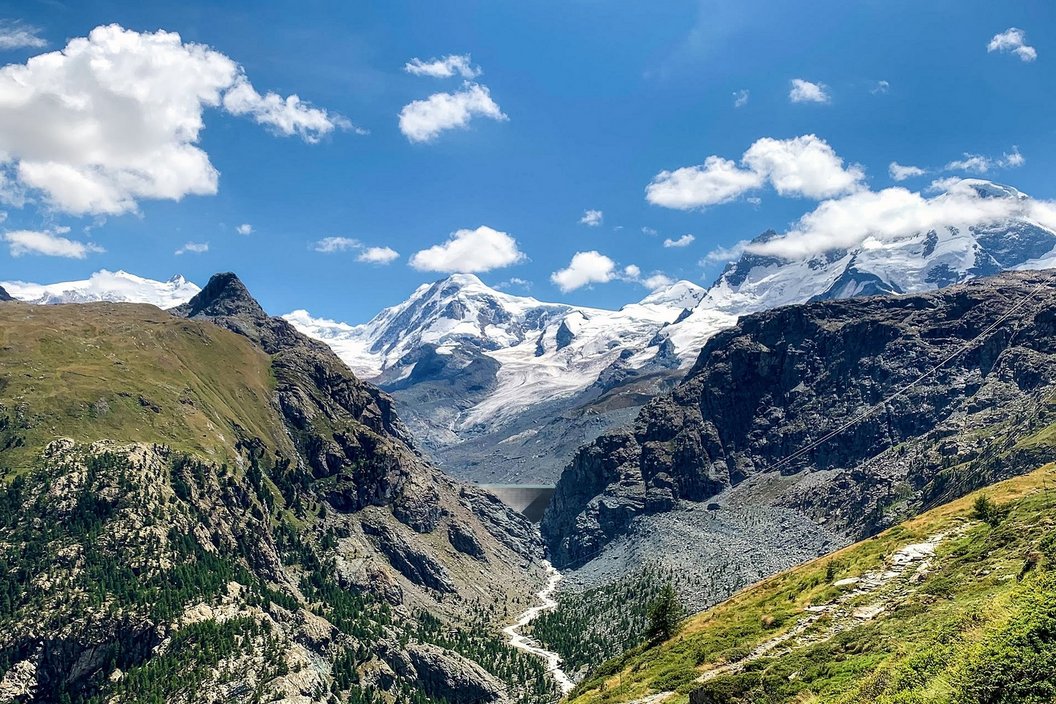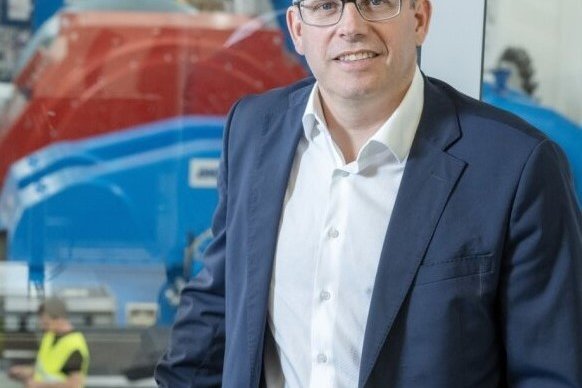
The Gornerli multi-purpose reservoir
As a multi-purpose reservoir, the Gornerli helps to significantly improve regional flood protection and secure the supply of drinking water in the long term.
The Swiss people's acceptance of the new Electricity Act is celebrating its first anniversary. This is an excellent opportunity to take a look at what has happened since the vote.
Exactly one year ago, the Swiss people voted by a comfortable majority of almost 70% in favour of amending the Energy Act and the Electricity Supply Act. Ensuring a secure electricity supply through local production and promoting renewable energy for winter are ambitious goals that require the development of numerous projects. A round table bringing together the federal government, the cantons, environmental organisations and companies in the electricity sector has therefore prioritized 16 hydropower projects. These choices were approved by the Swiss population in a referendum. Exactly one year after the Electricity Act was passed by the people, the “acceleration degree” is currently being discussed in Swiss Parliament. This aims to shorten planning and authorisation procedures and is crucial for the effective implementation of these 16 hydropower projects.

Gornerli Project
Alpiq is involved in several projects resulting from this national consensus. The Gornerli project above Zermatt is certainly the most impressive, providing a third of the additional winter electricity production of all the hydroelectric projects in the round table. A project of this kind inevitably requires a great deal of detailed analysis and studies to consider the many parameters relating to geology, glaciology, hydrology and nature, among other things. These detailed analyses will enable the structure to be adapted as closely as possible to its requirements and its environment. These various studies have already demonstrated not only the feasibility of the project but also its many benefits. In addition to its role as a storage facility to ensure winter electricity production through its integration with the Grande Dixence facilities, it can also regulate the flow of the Gornera river in the event of severe weather events, thereby limiting damage to Zermatt and the entire Mattertal valley. It also guarantees the (drink-)water supply for the entire valley during periods of drought, for example.
Building something like this in the middle of the Alps can't happen without impacting the landscape or wildlife. To find a compromise for ecological compensation, the project leaders (including the commune of Zermatt as co-initiator and Grand Dixence as facilitator) are in regular contact with local mountain and environmental organisations. These discussions are ongoing and will continue throughout the project.

In Moiry our studies show that the optimal height increase is between 8 and 10 metres.
Other projects resulting from the round table are also being studied by Alpiq in Valais. Raising existing dams in Moiry in the Val d'Anniviers and Emosson in the Trient Valley also in Valais requires extensive analysis. For these two projects, different height options are currently being studied in detail, including geostatic impacts on the existing wall, the geology around the dam, and the flora and fauna. The aim is to find the best compromise between costs, protection and benefit. In Moiry, for example, “our studies show that the optimal height increase is between 8 and 10 metres” says Michael Plaschy, Head of Hydropower Production at Alpiq.
The Swiss population sent a strong signal in last year's referendum, and Alpiq is determined to continue its efforts with its partners to implement the will of the people.